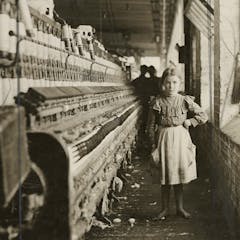
Articles on Labor history
Displaying all articles

On March 7, workers at the Ford Rouge River plant marched for better working conditions, sparking America’s labor movement. Almost a century later, a quiet park honors their memory.

A memorial at the site of the 1911 fire remembers those who died; a cadre of young Jewish women helped push for change in the wake of the tragedy.

Many of the reasons for strikes now – low compensation, technological change, job insecurity and safety concerns – mirror the motives that workers had for walking off the job in decades past.

Some of the biggest changes to child labor laws are in Iowa and Arkansas.

While Lewis Hine’s early-20th century photographs of working children compelled Congress to limit or ban child labor, the US Department of Labor is now under fire for failing to enforce these laws.

President Joe Biden called on Congress to intervene to avoid a strike that he said would ‘devastate our economy.’

The country’s reliance on ‘at-will’ employment means that companies face few restrictions when they want to downsize their workforces.

More than a fifth of US children were working in 1900, and many Americans saw nothing wrong with that. It took decades of activism and court battles plus economic upheaval to change course.

If government and business collaborate with workers, a scholar of labor relations writes, current economic problems could get less severe, the recovery smoother and lasting prosperity more likely.

It’s dismantling the Office of Personnel Management and relocating hundreds of USDA research jobs on short notice.

In the abstract, this near-mythic figure represents bravery, hard work and manliness.

Nearly one in five employed Americans is bound by a contract restricting moves to rival companies. Here’s one way to make those arrangements less common.

Giving labor unions a financial stake in a company such as a newspaper can offer unique advantages that could benefit employees, society and the bottom line.

The newspaper’s new owners harken back to a tradition of labor-led media in the early part of the 20th century, which represented a bulwark against corporate power.
